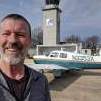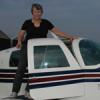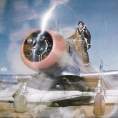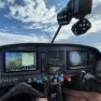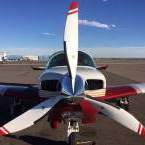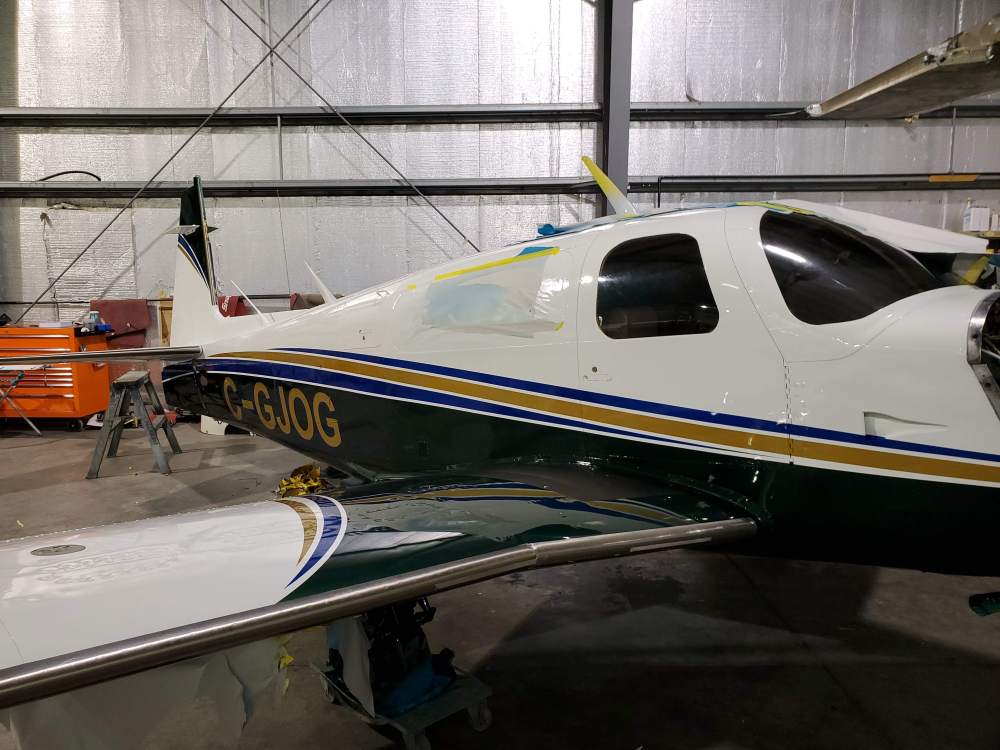Leaderboard
Popular Content
Showing content with the highest reputation on 04/14/2020 in Posts
-
8 points
-
It arose out of a combination of an online discussion and me trying to find things to occupy extra time sitting at home. If you are equally bored, you might like it. It compares the GTN, GNS, and IFD in a single task - holding where the holding fix is a point some distance from a navaid or waypoint.5 points
-
Well it was decided to just bite the bullet and deal with it. A new servo was ordered yesterday. It came into chandler aviation this morning and they shouod be done with it today. Shout out to chandler aviation for the honest help. He went out of his way to get 52q back home instead of having to wait 1 or 2 weeks. Im still on track to pick it up tomorrow.5 points
-
Get the cleanest, latest model J you can find. You will love it and remember it fondly after you've moved up to a long body.5 points
-
5 points
-
@MooneyStrike , you should contact Jimmy Garrison @ All American near San Antonio. https://www.allamericanaircraft.com/Default.htm He has an inventory of Mooneys plus he brokers more. And he recently partnered with Paul Maxwell of Don Maxwell Aviation. http://donmaxwell.com/ Get Jimmy's valuation worksheet. He puts a value on the bladders, one piece windshield, airframe and engine hours... and much more. Here's the model history Anthony referred to: http://www.mooneyevents.com/chrono.htm FWIW, IMNSHO, you're targeting the perfect Mooney. My '66E cruises at 145 ktas on 8 g/h. And that ought to be doable by most 50 year old Es.3 points
-
3 points
-
I think it is just terrible that the government is trying to control babies. Babies! BABIES! This is just not right. Free the babies!!!3 points
-
Instead of "maximum of 1000h SMOH", I'd place a condition "minimum of 50 flight hours in any given year in the past". It does not help an engine to be parked on the ground. Engines live longer when running regularly.3 points
-
WARNING - long answer from an engineer. This is your basic engineering statics class. Anything forward of the datum point is a negative arm. If we view the aircraft from the left side, negative arms and the prop will be left of the datum point. Any weight added in that area will be a positive weight times a negative arm which will result in a negative value indicating a counter-clockwise rotation relative to the datum point. Any weight added to the right of the datum will be a positive weight times a positive arm which results in a positive value. That indicates a clockwise rotation relative to the datum point. If you remove weight, it's a negative weight so you get the opposite results. CG is calculated by dividing the total moment by the weight. If you put a fulcrum under the CG the airplane will balance. It's pretty intuitive that removing the prop will move the CG aft. Removing a weight from the front of the aircraft will provide a positive moment. Even though the weight has decreased, the moment has increased. That's because the CG has moved aft. So even though the total weight is less, the arm is longer resulting in a larger moment. Either reducing weight without changing the moment or increasing the moment without changing the weight will move the CG (moment/wt) aft because either a larger top value or a smaller bottom value will result in a larger value for CG. So for example, if you removed the prop and put it in the cabin, the weight would be the same but the moment would increase and the CG moves aft. Likewise, if you were able to remove weight that was directly over the datum point (vacuum pump?) the moment would not change but the weight would decrease so the CG would again move aft. If the moment decreased when you removed the prop (which it doesn't), one change would offset the other and the CG would not move much. Interestingly, you can pick ANY datum point you want, measure arms and weights, multiply to get moments, and divide by total weight. While the distance to the CG from the datum point would change, the actual location of the CG of the airplane would calculate out to be in the same physical location. So they could have picked a datum point of the prop and had nothing but positive values. But the CG range would be more like 75 to 81 inches instead of 45 to 51 inches.2 points
-
I have a really good friend that would say "Buy the best and cry once."2 points
-
There is an old saying. "I am too poor to buy cheap things". It was this last summer where I started to look at my first plane and after substantial study with this community and other sources, I decided to buy a plane that checked all of the boxes on my list. It is an S with the Screaming Eagle upgrade, FIKI, a ton of electronics. It is a rare thing to find the unicorn. You know, the one thing you can buy where you wouldn't do anything to or change. Yours is out there waiting patiently for you to find it. Take the time and it'll show itself. All Mooneys are amazing. We have absolutely no buyers remorse large in part because of the plane and because of the awesome prior care taker of our plane. They were amazing plane owners. When buying a plane, you are buying the prior owner too. How did they take care of it? Did they do all maintenance and do it properly? Were they good stewards?2 points
-
Ah, my home town! I've let my SA license lapse though - pity, would be nice to fly a J next time I'm there. For the OP: Sounds like a J. Highly recommend you buy through Jimmy at All American Aircraft. Have the pre-buy done with JD at SWTA or one of the other nearby MSC's. Jimmy can arrange transition training - Brian Lloyd lives across they runway from All American and flew his K around the world. Fly it home yourself. Air-Mods in NJ is probably the closest MSC for future maintenance. Highly recommend you stick with a Mooney expert to maintain the plane. Finally, all the glass sounds nice - but frankly I think most folks completely overcapitalize. Fly the plane for a year and then decide about upgrades.2 points
-
That address is the FAA office in DC. I thought when the triennial registration program started, expired N-numbers were supposed to be on administrative hold for a period of time (3 years? 5 years?) before being made available again. A phone call or two is in order, to see what's going on. Good luck, and let us know what you find out.2 points
-
Initial thoughts: Tighten the retract circuit all the way down. If the flaps hold, you will know the problem is confined to the valve In that circuit. If they don’t hold then your problem is likely in the actuator circuit. The eccentric that unseats the retract valve seat has a very abrupt step. There is not a lot of transition and therefor minimal possibility that the eccentric is partially holding the valve open. To set the cable after it has been disconnected, pump the flaps down and move the cable to the retract position. Move the arm on the eccentric until the flaps retract. Hold the arm in that position and tighten the cable. If you are ever flying a plane again in which flaps will not stay down, do not use them. No flap landings and takeoffs won’t give you any trouble. Flying an airfoil that is subject to uncommanded changes in wing cord, center of pressure, lift generation and angle of incidence might...2 points
-
Context is a challenge on line. My wife would say that I can come off as gruff in person. Those two things can make for miscommunications. You’re not the first to read me as being rude when it was not my intent. Indeed we agree that this place is critical to keeping our old birds flying. No need to delete your comments, people have said way worse to me. My apologies for not being more tactful. My offer stands. If you run into a “gumption trap” during your endeavors, give me a call. I’m on Eastern time. Tree 0 one Fife zero 2 tree niner two fowah.2 points
-
I think stay at home has me over reacting a bit. Reading in to things. The first comment about the layout seemed petty to me. The second comment seemed to disregard the value of my effort because the issue is always misassembly. Like I was wasting my time. When I developed issues with my flaps I went through the forums. They are extremely valuable to folks like me. I went through all the posts on this. What I saw was about a 50% hit rate on good advice driven largely by a misunderstanding of how the pump worked. Someone in need doesn’t know who to believe. They have to decide that for themselves and it helps if they have a way to understand the parts themselves in a simple format this post was a way to get agreement on: “yep, that’s how it works” I think this forum is a major contributor to the future survival of these vintage birds. Mooney isn’t going to give us the prints or make diagrams for us. It falls on folks like you and I to gather and retain knowledge for others. We can each do our part. While I can’t make a circuit board diagram or tell someone how to do upholstery, I’m uniquely qualified for explaining how a hydraulic system works. So I’m contributing how I can. I am sorry if I misread your intentions. I’ll delete all my comments after you get a chance to see this one.2 points
-
Well, maybe not necessarily rude, but a little sarcastic... twice... But my message to Nuke: Ross (Shadrach) is one of the 3 most knowledgeable guys on this site when it comes to hydraulic flaps. He's a really good person to listen to about them. And with that said- I've disassembled and repaired 3 hydraulic flap actuators. 2 of them actually needed it. I understand the system pretty well. And I still found your schematic sketch helpful in understanding the system better.2 points
-
I bought an "E" 3 years ago, having never sat in a Mooney in my life. I had owned two airplanes earlier in my life (a Cherokee 140 and then a Beech Sundowner). The Mooney is nothing like these planes. I feel like I am "One with with my Mooney" not just a passenger in the plane. I bought it as a Project plane. I have spent twice as much on it, as I did to buy it. I love working on it, and it is my retirement project. I was a workaholic and my wife insisted that I have something to focus on when I actually retired. Even though it is an expensive "Hobby", it is also so interesting to learn everything I can about the actual plane, as well as flying it. So, in my humble opinion, you have picked a wonderful airplane. It flies fast, and is so solid, but realize that E's are vintage airplanes that will take a lot of TLC to maintain. I tell people that with the "E" that I have a wonderful 2-place airplane with all the luggage space you could dream of, and it sips fuel like a Cessna 150 and skims along at 150 MPH all day long. I wish you all the best in your search, -mark2 points
-
Hi and welcome! I certainly don't want to sound like I am second-guessing your parameters, because you've got a great list. But I would throw out a couple options to expand the offerings. We actually bought our 1966 E shortly after a prop strike...the result of a gear failure. It's a great airplane and the prop strike got us a recently installed factory zero-time engine with a new propeller (with no eddy current AD). Another option is to consider getting a "discounted" aircraft with closer to 2,000 hours on the engine. If the engine checks out well, you might get another 1,000 hours out of it for essentially free. Assuming the price reflects the high-time engine. I'll be following along on your search! Ross2 points
-
As @carusoam suggested, I'd make up a spreadsheet with a column for each of those five airplanes. List each of the features on a row so that you can compare the five planes side by side. I would also list the features in order based on importance or value/cost. For example adding an engine monitor would be $2000 to $5000 whereas adding an autopilot is $15K to $25K. Therefore all other things being equal the airplane with the autopilot but no engine monitor is quite a bit more valuable than the airplane with the engine monitor but no autopilot. I like to list the asking price first then year model, followed by hours since overhaul. Also, if you'd like to talk through these or any other Mooneys, send me a PM with contact details. I'm happy to talk through the process with you and what the market looks like at the moment.2 points
-
I was thinking the same thing. A Mooney is the best of all aviation worlds, of course, unless you happen to be a 92-year-old stroke victim. A call to Angel Flight might be in order, as they have access to a variety of sizes and configurations.2 points
-
Every once in a while we need a reminder about ramp and propeller safety. 50 years ago today, I was a line boy. I was filling my fuel truck through the top hatch (can't do that anymore) at the FBO/Flight School/Flying Club at KRHV. I was working at to earn money for my PPL. It was night and I was on top of my truck so I had a wide view of the ramp. Two airplanes were fired up and running. Both 172s. One was having an alternator problem. The owner of the FBO, a United pilot, was helping the renter. He was standing at the open left door, cycling on and off the master switch. Obviously the beacon and nav lights would go off when. he cycled down. It happened in the blink of an eye. A returning pilot was walking across the ramp. He obviously thought the engine he heard was the 172 behind him. It was not. I yelled at the top of my lungs to stop him, but too late. He walked into the running prop of the airplane with electrical difficulty. If there was a small grace, he hit the upswing. I never in a million years would have guessed a human body could bend the outer 12 inches of a prop blade back almost 90 degrees. I never would have guessed he would have been alive. But he was. I grabbed all the windshield towels in my fuel truck and came running over. The owner's wife was an RN, she instructed me to "wet them down. quick". So I ran over to the wash rack and hosed them down and ran back. She packed the gash and held him together until the ambulance arrived. He recovers but had to walk with two canes for the rest of his life. He lost a large amount of intestine and bowel and suffered from "short bowel syndrome" which shortened his life. The scene that still is etched in my mind to this day is using the wash rack hose to rinse guts and entrails and watching them go down the storm drain. There are some lessons here that were life long for me. I always run the beacon when the master is on. In fact, I just leave the switch on. I can buy new bulbs and flashers if the voltage spikes get them. I religiously adhere to FAR 91.209. (a)2 I don't stop the beacon and nav lights at night until the airplane. is in the hangar or tied down and getting ready to close and lock the door. I can charge the battery later I never walk within a wing span's distance of an airplane on the ramp and two times that from the props or engines.1 point
-
I must be loosing it...clearly the #27 oring is above the return orifice. Perhaps 23 serves as a spacer. I have an extra pump in my hangar. I will be there on Thursday and give it a look.1 point
-
Maybe I misunderstand but using a positve moment forward of datum will only, incorrectly, increase the moment aft of datum. If i hang a 1000lb weight from the spinner with datum at the firewall and use a positive moment then my result will be a calculated cg well aft of datum. If the datum is forward of the added weight, ie datum at spinner, then i would use a positive number. In the original w&b posted the added prop and spinner should have a negative arm leading to a negative moment. Removing the weight forward of datum results in a positive moment. Feel free to correct me if my thinking is backwards:)1 point
-
Prop overhaul complete. New tires tubes bearing repacked. Brakes cleaned and leaks stopped. Altimeter installed. Next hurdle is installing bracket next to gear actuator. Then on to steering bushing. Should be running in about 3 weeks! I will prevail!1 point
-
This is the general rule when you want to reserve an unused number. Deregistered numbers are held by the FAA under different rules. See Tom's post above. Eventually lots of previously-issued numbers will be reused.1 point
-
I might have missed it if already mentioned, There is a mod to the carb that adds an "M' to the part number, and brings fuel flow up to around 18-18.5. From TCDS.. Carburetor MA4-5, Flow Setting P/N 10-3878, 10-3878-M, or 10-4164-1).1 point
-
I spoke to a guy at Marvel over the weekend. I have a new Carb coming today. We'll see what happens. Im going to try to get it installed this afternoon and I'll be sure to post numbers after!1 point
-
Ok, so who has the proper 18 gph drill bit for the main jet? Also please post a picture of the carb so I know what to drill on.1 point
-
Do you mean duct tape? I would use 1” blue painters tape, easy to get off with no residue.1 point
-
Not an FAA expert, but my guess is that you would have to pick a different N-number.1 point
-
Wow just seeing this prodigious thread Anthony - the CHT issues have already been covered in some depth here. Not too coronavirus'd at the moment but doubt I have any insight here that hasn't been covered in some depth. Coincidentally I just started my own exhaust leak-CHT thread.1 point
-
The original quote for base while + 2 colours (full strip, acid, alodine, minor bodywork, and complete paint and trim) was 25.5k CDN - about $18.5k USD. Main gear + wells were another 2k extra, as was the extra colour stripe in my scheme. All in all very pleased with the work quality and communication.1 point
-
It’s fine, especially given the tight work space. Just takes a light touch.1 point
-
1 point
-
1 point
-
1 point
-
Bust out the old excel machine... start building spreadsheets... Each plane gets a new column.... +1 PPI +1 TT Many things show up all the time... either standard or popular replacements... Then find the Mooney list detailing all the changes from year to year... If you take six months to find your plane... you naturally become a qualified Mooney historian before your TT is complete... No real magic to it, just crunching numbers in your head when able... Bonus points for... AP holds a heading or follows a course or holds altitude.... audio panel GPS WAAS HSI ADSB-out engine monitor carb heat temp for M20C points removed from any orphaned analog radio with mechanical dials... or loran... double negative points for anything marked Narco... Expect nice planes to move quickly... dogs take extra time... Best regards, -a-1 point
-
1 point
-
1 point
-
You shoulda seen the movies in the 1920s and 1930s before the Motion Picture Production Code! Movies were fun! Just search YouTube for "pre-code movies"...tons of fun stuff.1 point
-
1 point
-
1 point
-
1 point
-
1 point
-
Not a fan of Li Ion batteries. Saw a bad crash caused by an overheated Lithium on a Glasair last year. There is a reason why Boeing eventually surrounded those things in a 2 inch thick titanium case machined out of a solid billet.1 point
-
1 point
-
At that power setting (27.5/24) your 20.4 gallons of fuel per hour is more than cooling your exhaust temps and ultimately your TIT. If your CHT is on #6 is that hot with that much fuel you have an airflow problem or a cylinder problem. Your engine is talking to you.1 point
-
I have a 66E. Speeds anywhere from 140 to 150 knots depending on weight, altitude, and temperature. Below gross (solo full fuel or 2 people partial fuel) I will see 150 knots TAS consistently at about 6-8K density altitude, full throttle, 2500 RPM. Only speed mod is the LASAR cowl closure.... and it could be faster, as I am slightly out of rig and have a couple extra anntenae and inop beacon I want to remove from the airplane. At these altitudes I burn about 10.5gph to get that speed. However, load it up to max gross weight and/or fly on a really hot day and I will see 140 knots at best. If the winds are with you, I like to take the airplane up high.. the other day I was solo and despite the warm atmosphere climbed up to 13.5 where I saw a consistent 140KTAS and 8gph. Economically speaking, with any tailwind, that is a lot more bang for your avgas buck if you're going somewhere far away than getting the last 10 knots out of it down low. On the other hand, I also think this is a testament to the flexibility of a Mooney and is but another reason why I like it. As others have said, the difference between the E and F is legroom, and possibly larger tanks/gross weight increase.1 point

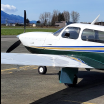



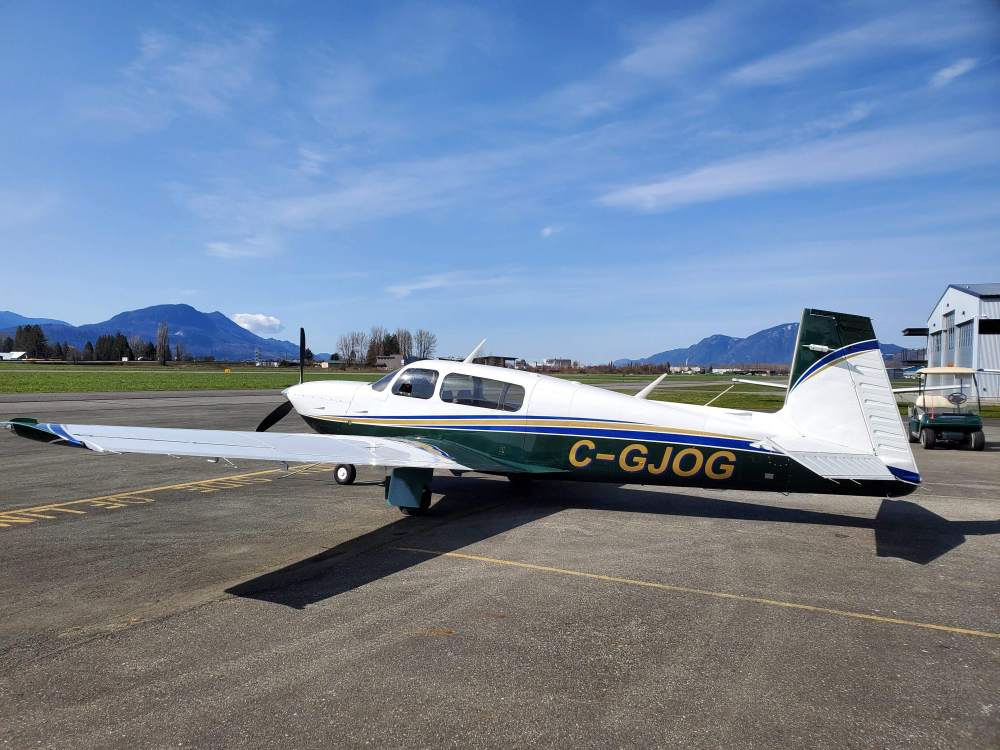
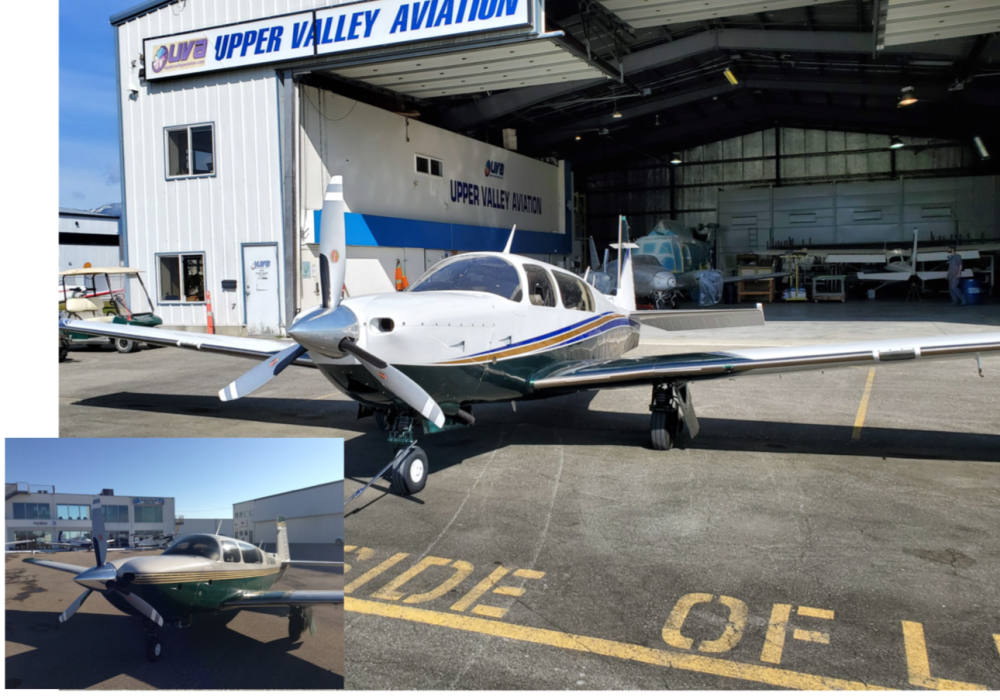


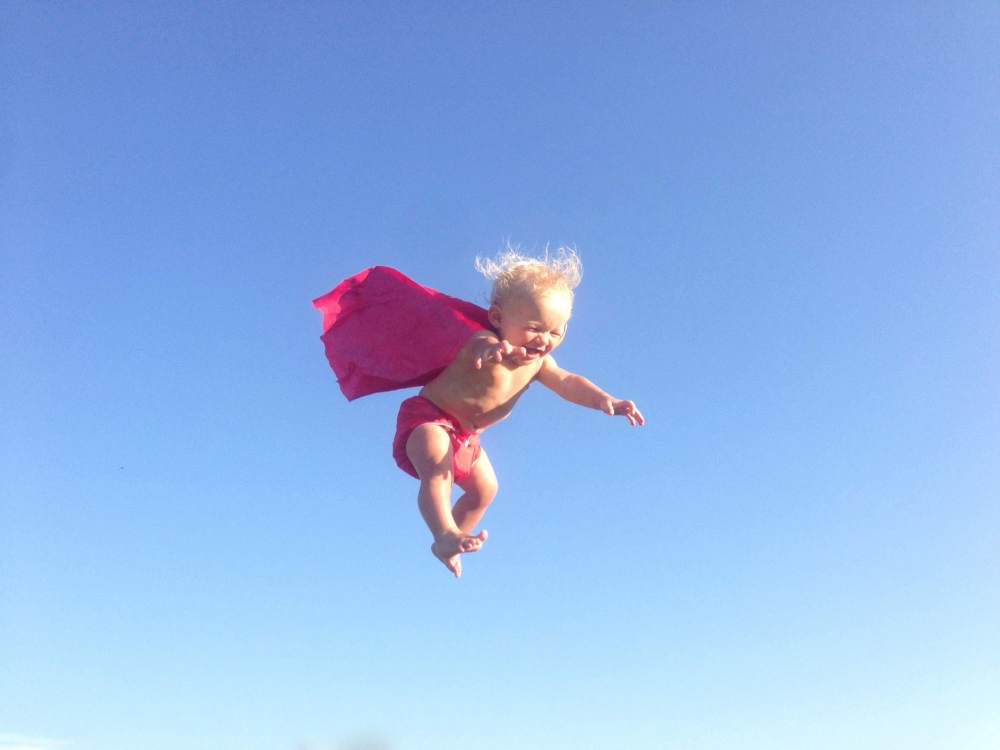


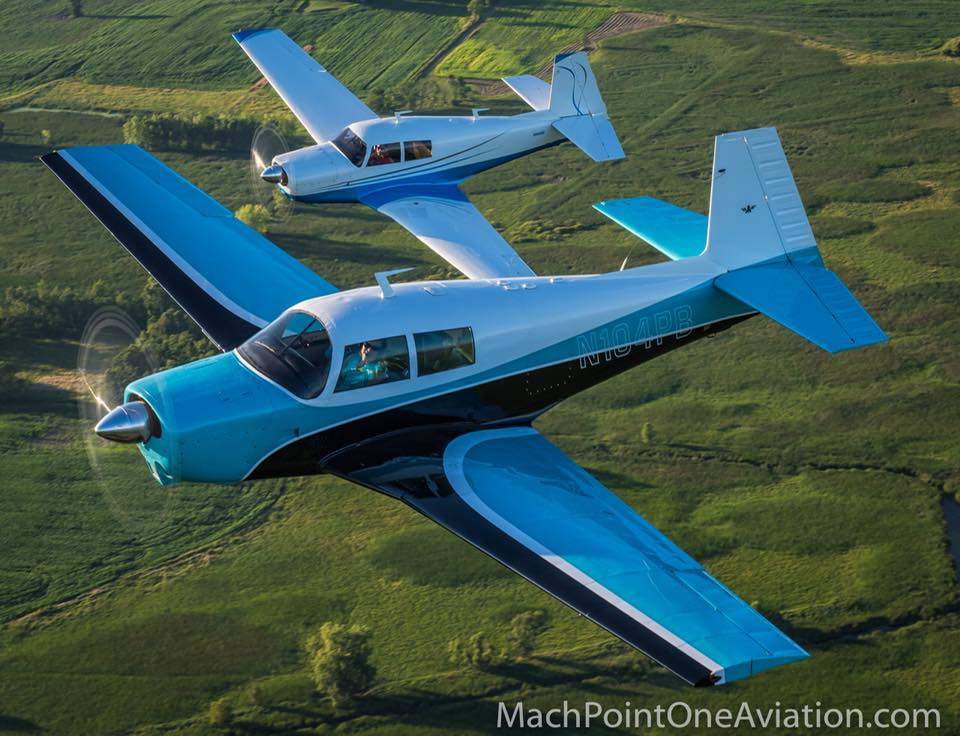
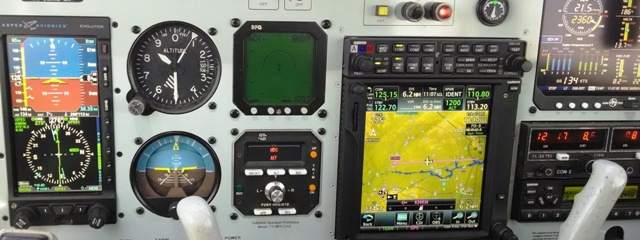
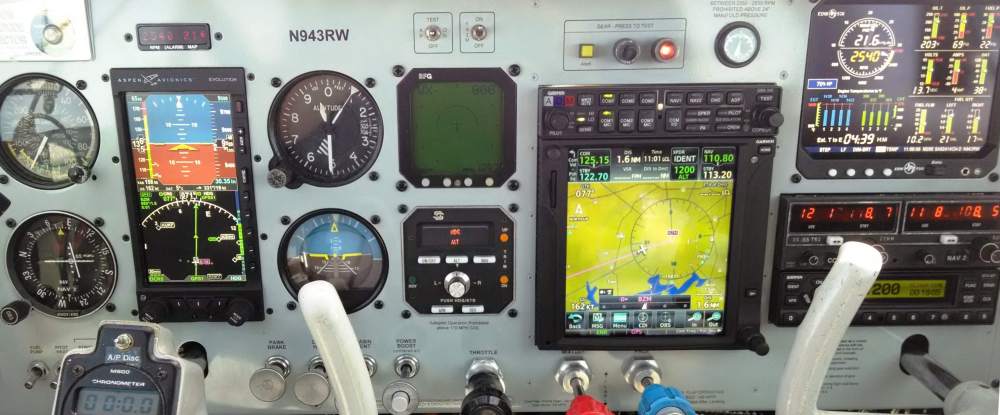
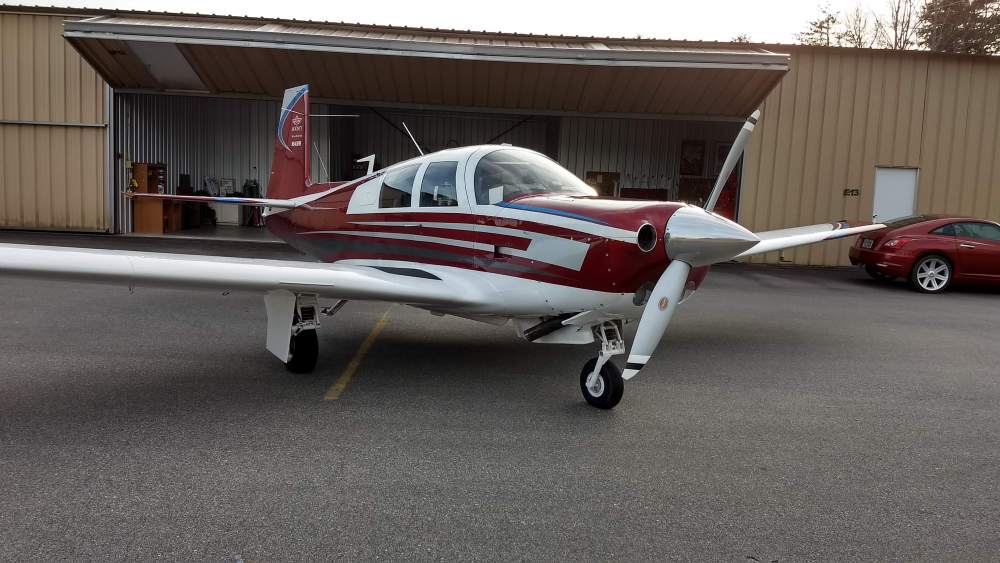









.thumb.jpg.ae084ff98f2eda1b3f595ed45b9592c9.jpg)
